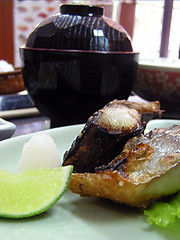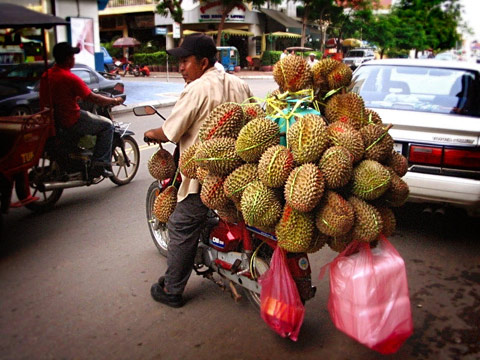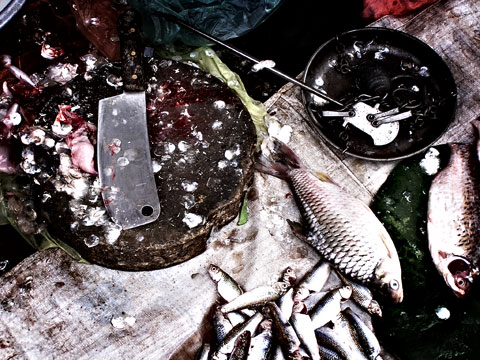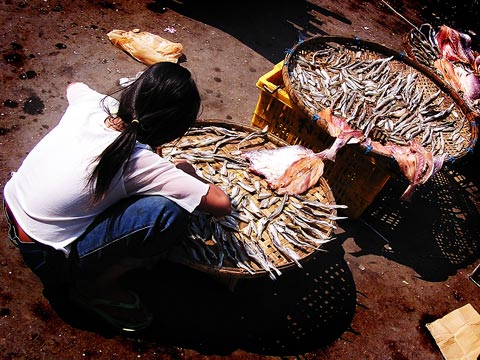Running a restaurant aimed at expats in Cambodia requires equal parts audacity and derangement. There seems to have been a recent growth in the number of Japanese restaurants around town, and of all the national cuisines that are replicated in Cambodia, Japanese has one of the greater degrees of difficulty. As a consequence, the restaurants seem to be run by a diverse and occasionally motley crew of Japanese expats who all seem to fit into the categories of audacious or deranged.
The owner of Ohan is definitely at the daring end of the spectrum. I’ve never seen him bedecked in anything but his canary yellow chef’s ensemble. He’s always keen to greet every single patron in the restaurant and when he asks if you’re enjoying your meal, you can tell that he is not asking as a routine social nicety. His moist-eyed look of joy when you answer in the affirmative is the only thing better than the food.
Apart from Iron Chef fashion sense, Ohan’s second audacious factor is the strange location. Although relatively close to most of Phnom Penh’s other Japanese restaurants (Kokoro, Himajin, and Origami), it is next to Cambodia’s worst sandwich vendor, Lucky 7, and opposite the decidedly un-sexy Phnom Penh Centre office buildings. You can only enter the place from the Phnom Penh Centre parking lot side. The external features are nondescript and the inside slightly less so. A few people I know who work in Phnom Penh Centre didn’t know it existed but the people who obviously matter, Japanese expats, have been more attentive because the restaurant is full at lunchtime.

The drawcard is the $5 set lunch special. Four choices, each as delicious as the next : pork sukiyaki, mackerel, tempura, and a soba/sushi set. There’s also a few more expensive bento ($7-10) if you have a hankering for something else. Since I’m on the piscatorial bandwagon at the moment, I went for local mackerel. The charred, salty slices of mackerel fillet were crispy without losing the mackerel’s tender oiliness. A potato/egg/mayonnaise salad, pickles, seaweed-heavy bowl of miso, and short-grain rice round out the set. Tea, hot or cold, is complementary.
Ohan has a loyalty card that only serves to remind me that in relative terms, I’ve blown a lot of cash on Ohan since it opened. They made a fatal mistake of offering a few Japanese-loving friends and I free draught beer as an opening special, so we’ve stayed until close a few nights over the past month to test their mettle and the capacity of their kegs of Tiger. The kegs run deep. Their dinner menu is expansive without being overwhelming. In Cambodian terms, it is not cheap. For a sushi/sashimi blowout dinner look to pay about $25 a head, sans sake.
Location: On Sothearos, opposite the Phnom Penh Centre
Phnomenon+2.0BETA.png)




